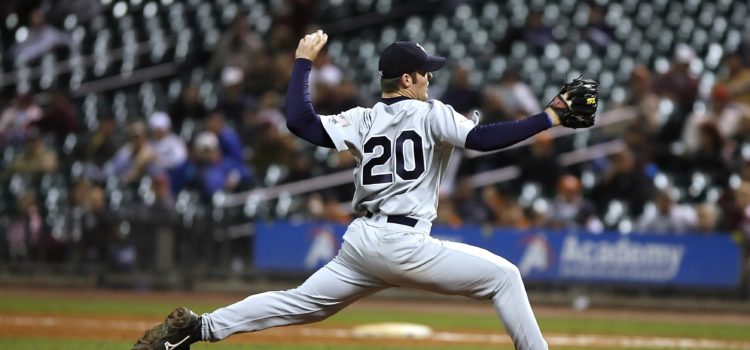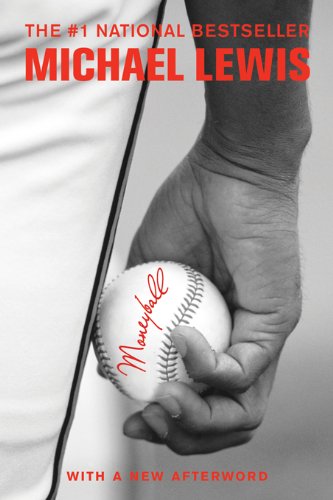

This article is an excerpt from the Shortform summary of "Moneyball" by Michael Lewis. Shortform has the world's best summaries of books you should be reading.
Like this article? Sign up for a free trial here .
What is the DIPS baseball statistic? What does it have to do with Moneyball?
The DIPS baseball statistic, or defense independent pitching statistic, is a statistical measurement developed by a paralegal named Voros McCracken. The DIPS baseball statistic offers a way to measure pitching more effectively, and it was adopted by Billy Beane and the Oakland A’s.
DIPS Baseball Statistic: A New Approach to Pitching
There is more to baseball than hitting and on-base percentage. Pitching still matters a great deal. The A’s apply their value investing approach to finding pitchers just as much as they do with hitters, seeking out players with unusual throwing styles or unconventional physical make-up whom they think other teams will look past.
Most other teams look for the athletic equivalent of a sports car or a thoroughbred racehorse in a pitcher. They want speed more than anything, and they treat a pitcher’s average pitching speed as the most important measurement of his performance. Billy believes this to be foolish. Pitchers ought to be judged solely on their success in making outs, preventing runs from being scored against the team, and thus contributing to run differential and wins. Velocity for its own sake is irrelevant. But this traditional model of evaluating pitching may not be as informative as the DIPS baseball statistics.
Years before, Bill James had pointed out that many commonly used fielding statistics, like errors, judged players based on luck. The dreadful state of fielding statistics made it difficult to evaluate these players rationally. By that same token, it would be hard to judge pitchers based solely on their merits, because so much of team defense depends on what the fielders do, not the pitcher. There are too many events on the field that are completely beyond the pitcher’s control.
Although James had never come up with an adequate solution to this problem, one does emerge from an unlikely source—a bored Chicago paralegal named Voros McCracken. McCracken argues that measurements like hits and earned runs against should be heavily discounted when evaluating a pitcher’s performance, as they depend too much on fielding. Instead, pitchers ought to be evaluated on the basis of the walks and home runs they give up and the strikeouts they earn, as these are aspects of the game solely under their control. This is the basis for the DIPS baseball statistic.
McCracken proves his theory correct by running the numbers from one season to the next. He sees that there is little consistency between the hits or earned runs a pitcher gives up from one year to the next. But there is remarkable consistency year after year with home runs, strikeouts, and walks. This strongly indicates to McCracken that his theory is accurate and that fielding is padding the numbers for bad pitchers and downgrading them for good pitchers.
McCracken calls his new statistical model DIPS: defense-independent pitching statistics. And his theories happen to line up with those of a major league GM with a nose for finding underpriced assets: Billy Beane.
Chad Bradford: Sidearm Pitcher and DIPS standout
One pitcher who excels in the DIPS baseball statistic categories is Chad Bradford. Despite his unusual throwing style, he is a remarkably talented pitcher, one of the best on the Oakland A’s staff and one of the best relief pitchers in the major leagues. And at a meager $237,000, he is a steal. Like nearly all the other A’s pitchers, he has been overlooked or written off by the other teams, as someone who could never succeed in the major leagues. Yet he is a key part of the A’s pitching staff—the best in baseball. They’re seeing something that the rest of the league isn’t—and at a fraction of the price.
Born and raised in Mississippi, Bradford barely makes his high school baseball team. The major leagues seem like a pipe dream for him. During his high school pitching days, Bradford’s coach teaches him to throw sidearm, a throwing style in which the baseball is released from the pitcher’s hand just above the ground, with the torso bent at a nearly horizontal axis. Although highly unusual (and initially uncomfortable), Bradford masters the style and sees that it is effective in striking batters out.
After he fails to receive an offer from any of the Division I schools, Bradford attends a local community college, where he joins the baseball team. While there, a scout from the Chicago White Sox takes notice of him, impressed by how naturally Bradford throws sidearm. To Bradford’s shock, he is taken by the White Sox in the 34th round of the 1994 draft.
Over the next few years, Chad works his way up through the White Sox organization to their Triple-A affiliate in Calgary. He is earning a pittance (he needs to take a side job as a forklift operator just to scratch out a living) but is living his dream by playing professional baseball and has blossomed into an exceptional pitcher by this time. In 1998 in Calgary, he gives up only three home runs in 51 innings pitched, with an earned run average of just 1.94. That same year, he is, at last, called up to the big leagues by the White Sox, where he turns in a similar dominant performance, excelling in the DIPS baseball statistic categories.
But the White Sox never really believe in Chad, attributing his success to mere luck. They don’t believe someone with such a bizarre style can succeed long-term in the majors. He just doesn’t look like a pitching ace. They never assign him a full-time spot on the Chicago pitching staff. But Bradford’s success hasn’t gone unnoticed by Billy Beane, who acquires him from the White Sox before the 2001 season for nothing more than a minor league catcher. Billy has stolen another player out from under the nose of a rival GM.
The DIPS baseball statistic, or defense independent pitching statistic, helped GMs like Billy Beane find effective pitchers for little money. The DIPS statistic is data-based, like the other elements of the Moneyball strategy, and was used to build a team that could return on an investment.

———End of Preview———
Like what you just read? Read the rest of the world's best summary of Michael Lewis's "Moneyball" at Shortform .
Here's what you'll find in our full Moneyball summary :
- How Billy Beane first flamed out as a baseball player before becoming a general manager
- The unconventional methods the Athletics used to recruit undervalued players
- How Sabermetrics influences American baseball today






